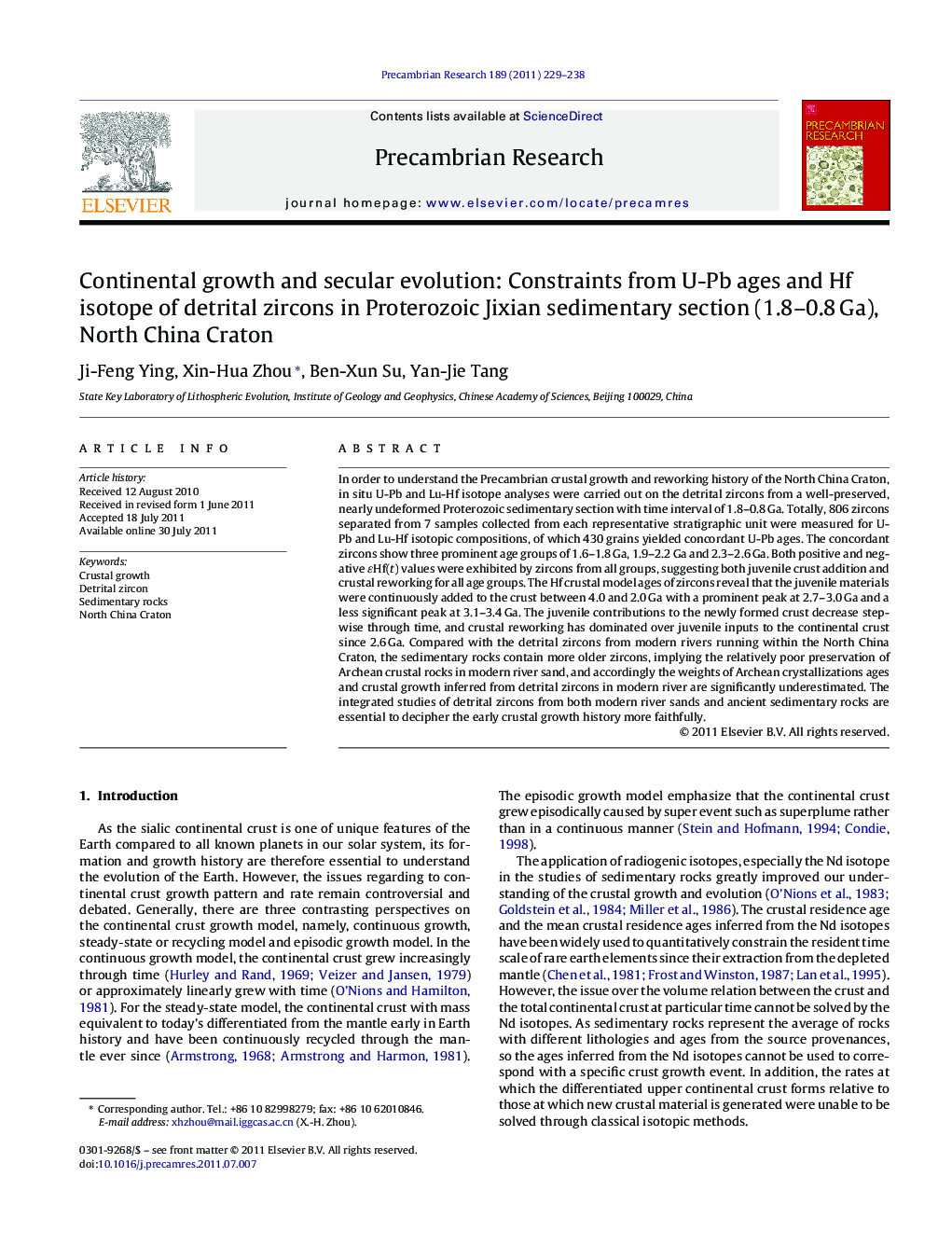| Article ID | Journal | Published Year | Pages | File Type |
|---|---|---|---|---|
| 4723674 | Precambrian Research | 2011 | 10 Pages |
In order to understand the Precambrian crustal growth and reworking history of the North China Craton, in situ U-Pb and Lu-Hf isotope analyses were carried out on the detrital zircons from a well-preserved, nearly undeformed Proterozoic sedimentary section with time interval of 1.8–0.8 Ga. Totally, 806 zircons separated from 7 samples collected from each representative stratigraphic unit were measured for U-Pb and Lu-Hf isotopic compositions, of which 430 grains yielded concordant U-Pb ages. The concordant zircons show three prominent age groups of 1.6–1.8 Ga, 1.9–2.2 Ga and 2.3–2.6 Ga. Both positive and negative ɛHf(t) values were exhibited by zircons from all groups, suggesting both juvenile crust addition and crustal reworking for all age groups. The Hf crustal model ages of zircons reveal that the juvenile materials were continuously added to the crust between 4.0 and 2.0 Ga with a prominent peak at 2.7–3.0 Ga and a less significant peak at 3.1–3.4 Ga. The juvenile contributions to the newly formed crust decrease stepwise through time, and crustal reworking has dominated over juvenile inputs to the continental crust since 2.6 Ga. Compared with the detrital zircons from modern rivers running within the North China Craton, the sedimentary rocks contain more older zircons, implying the relatively poor preservation of Archean crustal rocks in modern river sand, and accordingly the weights of Archean crystallizations ages and crustal growth inferred from detrital zircons in modern river are significantly underestimated. The integrated studies of detrital zircons from both modern river sands and ancient sedimentary rocks are essential to decipher the early crustal growth history more faithfully.
► Detrital zircons from a Proterozoic sedimentary section are measured for U-Pb ages and Hf isotopic compositions with aim to understand the Precambrian crustal growth and reworking history of the North China Craton. ► The concordant zircons acquired show three prominent age groups of 1.6–1.8 Ga, 1.9–2.2 Ga and 2.3–2.6 Ga. ► The Hf crustal model ages reveal that the juvenile materials were continuously added to the crust between 4.0 and 2.0 Ga with a prominent peak at 2.7–3.0 Ga and a less significant peak at 3.1–3.4 Ga. ► Compared with the detrital zircons from modern rivers, sedimentary rocks contain more older zircons, and crustal growth inferred from detrital zircons in modern river are significantly underestimated.
